Since my last post, a reader emailed me to tell me that the initials of the cutter would be found on the label, those initials being "TH". I assume this must mean Terry Haste, former MD of Huntsman, but was he there in 2000? I'll have to go back and read the book again. Or do some more homework. But in any case, we're not evaluating the cutting here, only the sewing. It's just fun to know a bit about the suit.
Another thing I have been thinking about; there was a mass exodus from Huntsman during that period so anything not quite up to par may be a result of them losing their best people. Or it may not. More to think about. Meanwhile, let's get ripping.
The finishing inside is quite neat; the felling is so neatly done that you have to look close to see it in spots. There is no pleat in the bottom of the lining and to tell the truth, I'm not sure one is really needed, looking at this suit. Hmm. 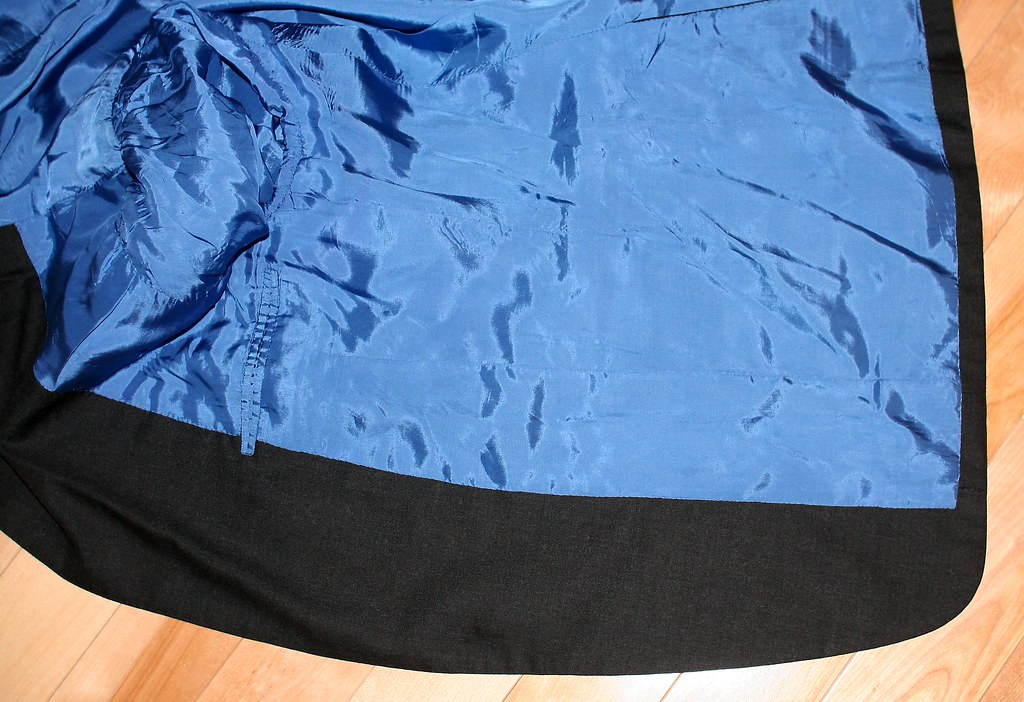
The neck is neatly done as well. The facing/collar seam has actually been opened and drawn on the whole way, rather than clipping and working the facing over the top collar around the neck which creates some bulk. Extra work, but I like it and will use it. 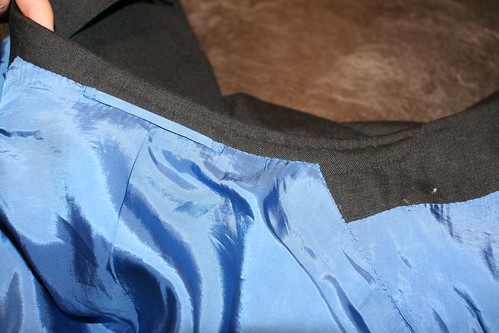
Two pockets on the left, one on the right, neither with any kind of closure. 
While I was surfing Ebay listings I found the pockets odd, as they seemed to have been worked onto the lining, the way manufactured suits are done, and like this one-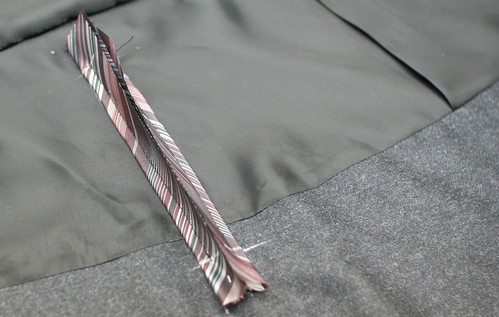
I prefer to set the pockets onto a cloth facing which will carry the weight better. It also makes relining much easier- if the pocket has been cut through the lining and goes onto the facing, as in the picture, it's a bit of a beast to reline neatly since you have to work the new pocket exactly over the hole in the facing- margins of error no more than 1/32" or so. Not a job for your average alterations tailor. Well, I should have known better. I didn't notice that the lining was a bit crooked at the pocket- this would have given it away. The pocket is not actually worked through the lining (though the smaller one just below it is)- the pocket is worked through a cloth facing and the lining is felled to conceal the work. It is common for most Italian tailors to leave this facing exposed in a bit of a decorative manner, like in this shot from a Zegna Couture coat (notice also the hand-felled lining with a backstitch instead of a felling stitch- we also saw this on the Brioni dinner jacket I dissected)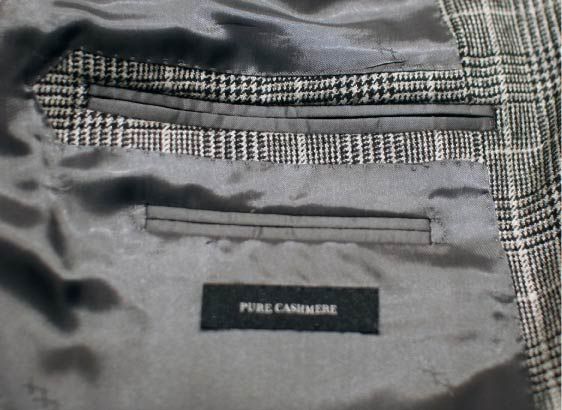
but Huntsman has chosen to conceal it entirely; naturally, it has all been done by hand. 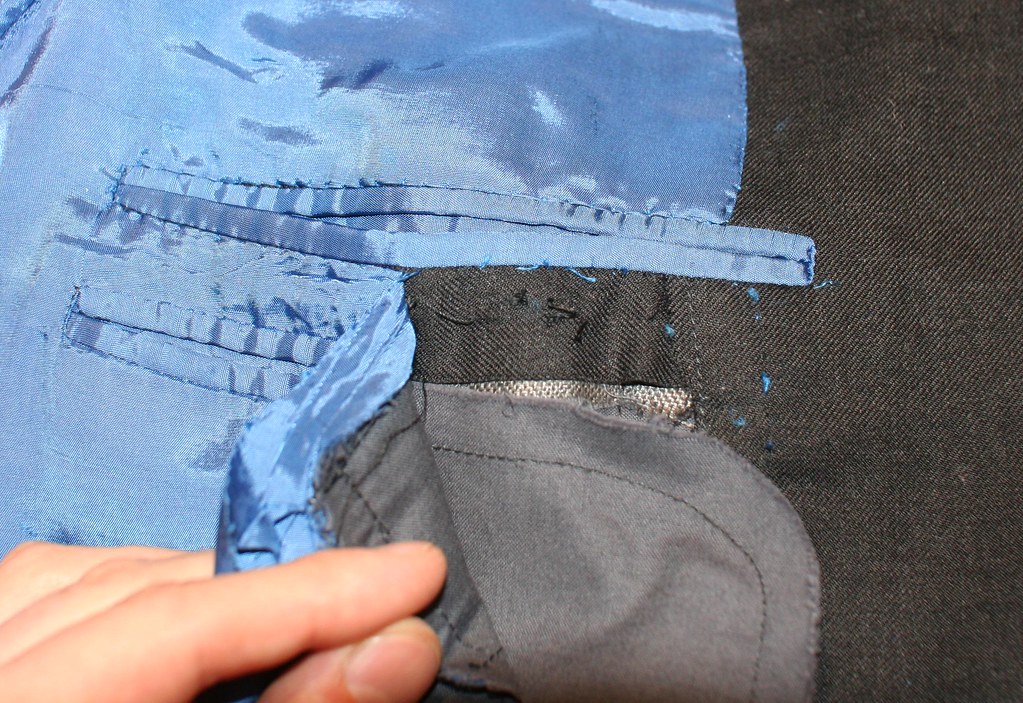

Now on to some of what gives the suit its shape.
The bridle has been taped with lining instead of the cotton tape which is more common, and the lapel has been sparingly pad stitched. Remember that a lot of the stitching poked through- it is probable that the padding was done by an apprentice. I personally feel that denser pad stitching on the lapel will give a richer roll, and the results that I get would seem to support that theory, but I haven't properly tested it yet so I can't state it as fact, only as received wisdom. Which can sometimes be false. The undercollar (not shown) has been padded by hand, something that I HAVE tested extensively and found that it is not necessary to do by hand- the machine does just as adequate a job, in my opinion.
The canvas front is a lovely, dense hair canvas which has not been singed. I need to find out where this canvas comes from. Huntsman has a reputation for being a firm coat so I expected to find more in the chest. Instead, there is only one piece of haircloth, on a partial bias, and a rather thick piece of chest felt.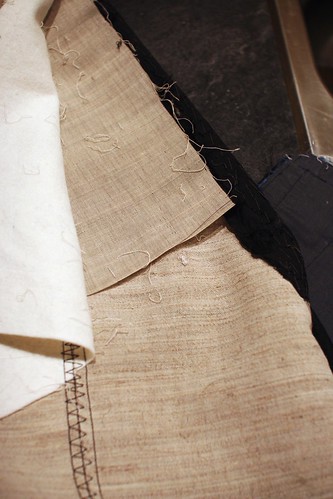
The direction of the hairline is surprising since this won't support the upper shoulder as well and there is no additional shoulder support piece.
The "vees" or shoulder cuts are left open rather than being fixed. I'm not sure how I feel about this yet. Readers who survived my pagoda shoulders will remember that these vees are opened and fixed in place to provide the shape to the shoulder and without them being fixed in place they can shift around so the shoulder shape will not be constant. This could possibly be a good thing since there is perhaps more movement allowed, but I think this would be very dangerous in lighter cloth- the hollow created by the open vees would make a very visible dent in the shoulder which would be very obvious in light cloth- the only thing covering them is the piece of striped lining on the top and bottom. I need to think about this for a while.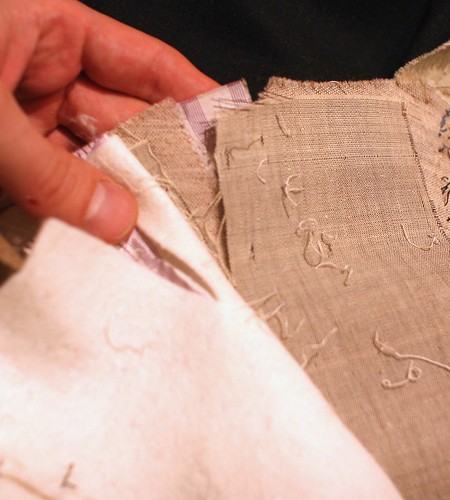
There is a moderate amount of wadding in the shoulder and two small pieces of collar linen. This is certainly a lot less than either Oxxford or Brioni put in their shoulders, again a surprise, since I expected a firmer shoulder from Huntsman.
Here is the pad removed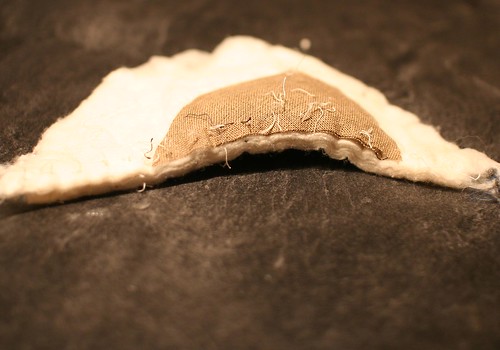
In the sleeve head, FOUR layers of heavy felt. This is a lot, even for me who likes a good, healthy rope. The effect is not bad, but its a bit chunky and lumpy since it's put in straight rather than shaped, which is now the norm (sometimes tradition should give way to innovation).
The back of the scye (as well as the underarm) has been padded with cotton and chest felt. This was common in the days of body coats (Sator will love it) but I haven't seen much of it lately; I'm not sure if this is common practice for them or if this gentleman had very hunched shoulders which needed some help. Judging by the, um, proportions of the suit, I am guessing the latter.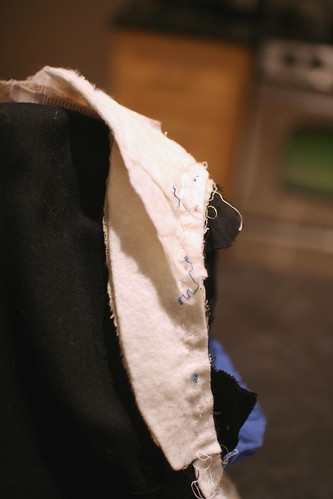
EDIT
I went plowing along without mentioning that the shoulder seam was sewn by hand and that the sleeve has been sewn in by hand. More on that later.
So far so good, the only major surprises being how LITTLE stuff there was inside. I was expecting much more. As some of my other garments begin to arrive, we'll have a better basis of comparison, though. Need to find an A&S......... But before that, the trousers, which seem to have changed little in the last 100 years.








2 comments:
Thank you for taking the time to present the details of this suit. It is fascinating.
Jeffery - after your comment on needing to find an A&S, I have one for you (worn out, yours free of charge). Could you drop me a mail with your shipping address?
Post a Comment